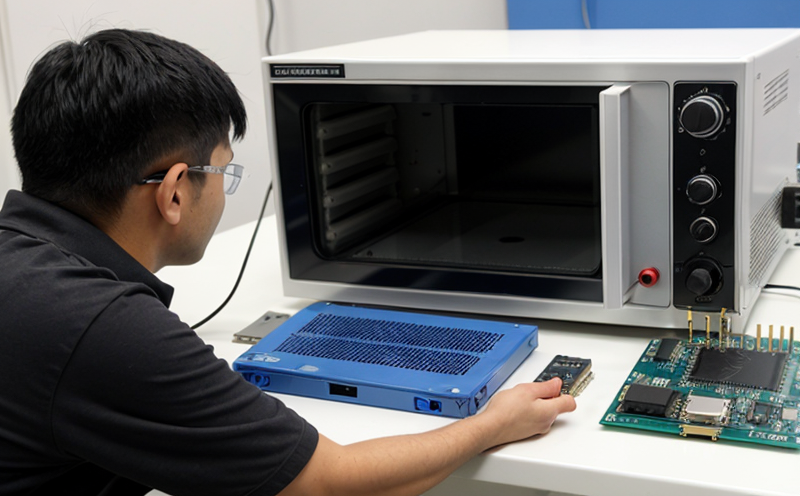UL 94 Flammability Testing for Plastic Materials in Microelectronics
The UL 94 flammability tests are essential for ensuring that plastic materials used in microelectronics meet stringent safety standards. This test is critical because even small amounts of fire can cause significant damage to electronic components, leading to costly downtime, product failures, and potential safety hazards.
UL 94 tests classify the burning characteristics of plastic materials based on their ability to self-extinguish once removed from an ignition source. There are several grades ranging from V-0 (the highest rating) to V-2, H, and 75V. The UL 94 flame test is particularly crucial for microelectronics because it assesses the risk of fire propagation within tiny spaces like circuit boards and enclosures.
Understanding the importance of these tests can help quality managers, compliance officers, R&D engineers, and procurement teams make informed decisions about material selection in their product design. Proper flammability testing ensures that materials used are safe not only during production but also throughout the entire lifecycle of a product.
In microelectronics, where space is at a premium, any fire can quickly spread. Therefore, it's vital to select materials with appropriate UL 94 ratings to minimize this risk. This test helps manufacturers identify suitable alternatives by comparing various plastic formulations based on their flame retardancy properties. It also aids in ensuring compliance with regulatory requirements and industry standards.
The process involves subjecting small samples of the material to a controlled burn, observing its behavior under specific conditions, and measuring parameters such as after-flame time, after-smoke, and vertical burning. Compliance ensures that manufacturers can confidently use these materials without compromising safety or performance expectations.
For quality assurance teams, UL 94 tests provide critical insights into the fire resistance capabilities of plastic components. By incorporating this testing early in the design process, companies can avoid costly rework later on due to non-compliant materials. Additionally, it facilitates better communication between suppliers and end-users regarding material specifications.
Compliance with UL 94 standards also demonstrates a commitment to safety and reliability, enhancing brand reputation among customers who prioritize product quality and longevity. When specifying materials for new products or sourcing replacements, considering the UL 94 rating can help ensure consistency across batches while maintaining consistent performance over time.
In summary, incorporating UL 94 flammability testing into your design process is crucial for ensuring that plastic materials used in microelectronics are safe and reliable. By following best practices during specimen preparation and adhering to strict testing procedures, you can guarantee high-quality results that meet both internal standards and external regulations.
- Ensures compliance with UL 94 safety standards
- Identifies suitable alternatives for flame retardant materials
- Facilitates better communication between suppliers and end-users regarding material specifications
- Demonstrates a commitment to product quality and reliability, enhancing brand reputation among customers who prioritize these factors.
Eurolab Advantages
At Eurolab, we pride ourselves on delivering accurate and reliable UL 94 flammability testing for plastic materials in microelectronics. Our state-of-the-art facilities provide the necessary expertise to conduct these tests according to international standards like ISO/IEC 60751:2003 and ASTM D6410-18e1.
Our experienced technical staff includes professionals who possess a deep understanding of microelectronics manufacturing processes. This knowledge allows us to tailor our testing approach specifically for the unique challenges faced by this industry segment, ensuring accurate results every time.
We offer comprehensive services that go beyond just conducting tests; we also provide detailed reports and recommendations based on our findings. These insights can guide manufacturers towards making informed decisions about their material selection processes. Our team works closely with clients to understand their specific needs before recommending appropriate testing protocols.
Our commitment to excellence extends across all aspects of our service offering, including prompt turnaround times for test results, secure storage solutions for samples, and continuous training programs for our personnel to stay current with industry trends and advancements.
International Acceptance and Recognition
The UL 94 flame test has gained widespread acceptance across various industries due to its rigorous testing procedures and strict compliance requirements. Many countries have adopted the standard as a benchmark for assessing fire safety in plastic materials, including those used in microelectronics.
For instance, ISO/IEC 60751:2003 explicitly references UL 94 standards when specifying flame retardant properties of plastics intended for electronic devices. Similarly, ASTM D6410-18e1 provides additional guidance on conducting these tests using internationally recognized methods.
By adhering to UL 94 guidelines, manufacturers ensure their products meet global expectations regarding safety and quality assurance standards. This consistency across borders helps streamline supply chains while maintaining consistent performance levels worldwide.
In conclusion, incorporating UL 94 flammability testing into your microelectronics manufacturing process is essential for ensuring compliance with international regulations and gaining recognition from key stakeholders within the industry.





